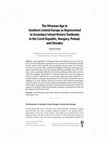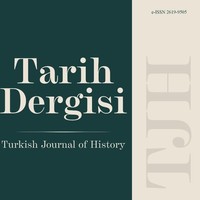Papers by Gabriel Pirický
Pirický, G.: „The Legacy of the Ottoman (Turkish) Age in Slovakia in the 21st Century,“ In Drayso... more Pirický, G.: „The Legacy of the Ottoman (Turkish) Age in Slovakia in the 21st Century,“ In Drayson, Elizabeth (Ed.): Europe’s Islamic Legacy: 1900 to the Present, Leiden – Boston: Brill 2023, s. 29-47. ISBN 978-90-04-51071-5, doi:10.1163/9789004510722_002
This is an open access chapter distributed under the terms of the CC BY-NC-ND 4.0 license.
Academic Interpretations of Islam in Communist Czechoslovakia: Rudolf Macúch, Karel Petráček and ... more Academic Interpretations of Islam in Communist Czechoslovakia: Rudolf Macúch, Karel Petráček and Ivan Hrbek. In: Rocznik Orientalistyczny LXI zeszyt 2/2009, pp. 93-102.
„Çek Cumhuriyeti, Macaristan, Polonya ve Slovakya’dan lise tarih ders kitapları aracılığıyla Doğu... more „Çek Cumhuriyeti, Macaristan, Polonya ve Slovakya’dan lise tarih ders kitapları aracılığıyla Doğu-Orta Avrupa’da Osmanlı dönemi“, In: Tarih ve Toplum güz 15/2012, pp. 127–146.
Pirický, G. (2010): „Restrictive Legislation towards Minor Religions in Slovakia: the Case of the... more Pirický, G. (2010): „Restrictive Legislation towards Minor Religions in Slovakia: the Case of the Muslim Community“, In: European Yearbook for Minority Issues 2007/8, Leiden - Boston: Brill - Martinus Nijhoff Publishers, 717–729.
The Gülen (Hizmet) Community
in Slovakia and Bosnia:
Transnational Movement as a
Turkish Foreign ... more The Gülen (Hizmet) Community
in Slovakia and Bosnia:
Transnational Movement as a
Turkish Foreign Policy Actor

• Local populations in Hungary, Poland, and Slovakia, and to a lesser degree in the Czech Republi... more • Local populations in Hungary, Poland, and Slovakia, and to a lesser degree in the Czech Republic, experienced much interaction with Muslims throughout the course of the sixteenth and seventeenth centuries, when the Ottomans, as well as the Crimean Tatars, invaded the Kingdom of Hungary and waged wars against the Polish-Lithuanian state and the Habsburg Hereditary Lands. The Otto-man era has usually been refl ected in the history textbooks of these four countries under the headings "Turkish Wars" or "Ottoman Expansion. " Since the collapse of the Iron Curtain in 1989, all four ex-communist states have been involved in rewriting textbooks, although the perception of the Ottomans and Muslims has not changed in all cases. Without claiming to map the entire historical presentation of the Ottomans, this article demonstrates the polyphony found in the textbooks of this region. By analyzing secondary school educational materials in all four languages , it is possible to identify stereotypes, prejudices, and distortions within the perception of the Ottoman Turks.
Pirický, G. (2013): „The Ottoman Age in South-Central Europe as Represented in Secondary School History Textbooks in the Czech Republic, Hungary, Poland and Slovakia,“ In: Journal of Educational Media, Memory and Society, Vol. 5/1, s. 108–129.
Pirický, G.: Merging Culture with Religion: Trajectories of Slovak and Czech Muslim Converts sinc... more Pirický, G.: Merging Culture with Religion: Trajectories of Slovak and Czech Muslim Converts since 1989. In: Van Nieuwkerk, Karin (ed.): Moving In and Out of Islam, Austin: University of Texas Press 2018, s. 107-129. ISBN 978-1-4773-1748-8
Tiež ste mali dojem, že je to naopak?
Books by Gabriel Pirický









Uploads
Papers by Gabriel Pirický
This is an open access chapter distributed under the terms of the CC BY-NC-ND 4.0 license.
in Slovakia and Bosnia:
Transnational Movement as a
Turkish Foreign Policy Actor
Pirický, G. (2013): „The Ottoman Age in South-Central Europe as Represented in Secondary School History Textbooks in the Czech Republic, Hungary, Poland and Slovakia,“ In: Journal of Educational Media, Memory and Society, Vol. 5/1, s. 108–129.
Books by Gabriel Pirický
This is an open access chapter distributed under the terms of the CC BY-NC-ND 4.0 license.
in Slovakia and Bosnia:
Transnational Movement as a
Turkish Foreign Policy Actor
Pirický, G. (2013): „The Ottoman Age in South-Central Europe as Represented in Secondary School History Textbooks in the Czech Republic, Hungary, Poland and Slovakia,“ In: Journal of Educational Media, Memory and Society, Vol. 5/1, s. 108–129.